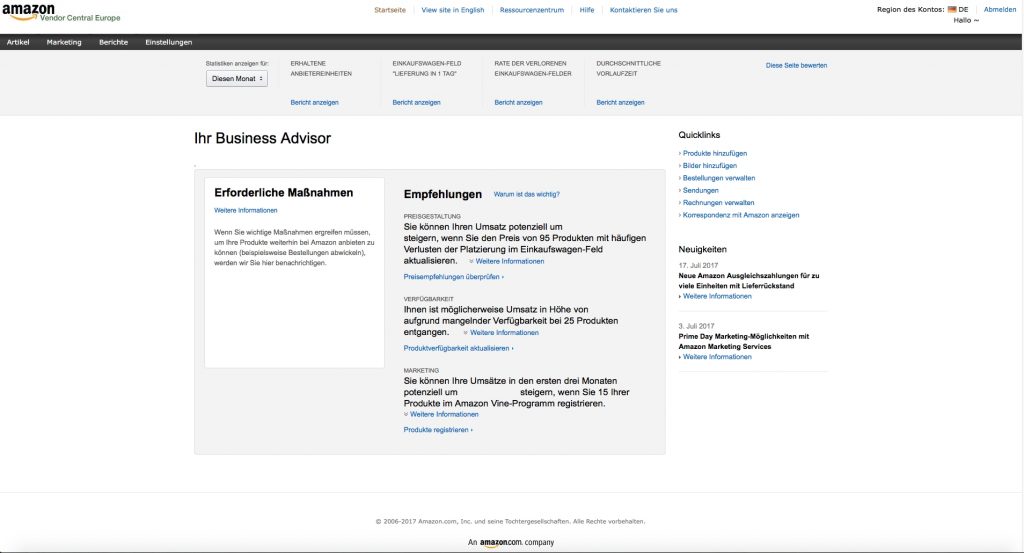Amazon not only offers the opportunity to purchase products on the Marketplace, but also to sell to Amazon as a B2B vendor. If, for example, you want to sell goods to Amazon as a brand manufacturer or distributor and not offer the products under your own name, the vendor program makes sense in this case (first-party seller). A vendor acts like a supplier and sells its goods to Amazon in large quantities. If Amazon is in possession of the goods, Amazon also assumes responsibility for communication with consumers, product returns and the entire fulfillment process. You can only become a vendor (supplier) by invitation from Amazon. If you qualify as a vendor and meet the guidelines, Vendor Central is the central management tool for orders and sales analyses. Vendor Central can also be used to adjust item data (e.g. product titles, descriptions, etc.) and manage flash offers.

Special features of Amazon Vendor
Customer satisfaction is known to be one of the most important factors for successful selling on Amazon and the most important basic principle of Amazon. Items from first-party sellers are labeled “Sold by Amazon” on the product detail page. As part of the vendor program, Amazon can buy a large number of products at once, but can also order certain products in very small quantities and sometimes not at all. Much of the process is automated using an algorithm that calculates the demand, profitability and attractiveness of the products. Amazon Vendors also have the opportunity to participate in various marketing programs such as Amazon Vine or Subscribe & Save. Vendors can also integrate A Plus content and videos on their product pages.
Disadvantages of Amazon Vendor
- Access by invitation only
- No price control over the sales price
- Loss of control over the quantity and type of products ordered
- Very high dependency on Amazon
- Premium Analytics for a fee (ARA Premium)
Advantages of Amazon Vendor
- Additional services such as Vine or videos can be used
- Extensive analytics tools
- No need for own customer support
- Returns do not have to be managed (directly) by the customer
- No own (additional) warehousing required for B2C processing
Vendor Express as an additional service
Vendor Express offers special advantages for manufacturers and retailers. Since Amazon sells the goods itself or receives them from vendors, Amazon has a strong vested interest in successfully selling the items. Amazon ensures that it generates as many sales as possible and increases the conversion rate through better placements and the best possible ranking. By participating in Vendor Express, manufacturers also give customers the opportunity to use the Amazon Prime service – a service that many customers regularly use and appreciate.
Another option that a vendor or manufacturer can use is direct fulfillment, which is currently (as of August 21, 2017) only available in the USA. With direct fulfillment, the goods remain in the manufacturer’s warehouse instead of being sent to Amazon, as is the case with Vendor Express. When a product is sold, the manufacturer receives a notification from Amazon and must ship the item directly to the customer in accordance with strict shipping guidelines.
This option opens up the opportunity to package bestsellers individually and, for example, to strengthen customer loyalty by including promotional materials or flyers. However, smaller and young companies usually find it difficult to meet these requirements, as their logistics processes are often not designed for these guidelines.